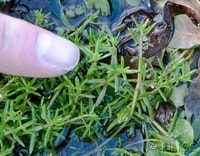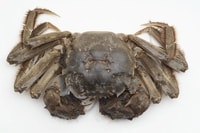We need information on where invasive non-native species occur, especially new arrivals in Scotland, to support management including biosecurity and, in some cases, eradication. We encourage you to submit records via the link below.
Non-native species are animals or plants that have been introduced into an area where they do not naturally occur. Invasive non-native species (INNS) are those non-native species that can spread rapidly and become dominant in an area or ecosystem, causing ecological, environmental and economic impacts. Some invasive non-native species can also affect human health.
It is important to remember that, while there are over 900 non-native species in Scotland, only a minority become invasive, but these few can have serious negative impacts.
In Scotland, it is illegal to release, plant or allow to spread any non-native species into the wild.
Non-native species of concern
Most invasive non-native species fit into one of the following categories, which each require different responses from the relevant authorities and other responsible or affected parties:
- The species is not currently in the wild in Scotland so new records are essential, particularly where they can help us decide whether a rapid response to tackle the problem is possible
- The species recently arrived in Scotland so new records are essential to understand the problem and inform a suitable response
- The species is already in Scotland in localised populations, so records help us to understand distribution better to support management and protect uninvaded waters
- The species is already widespread in some areas of Scotland so records could let us know about new populations in new areas and help us to prevent further spread
Examples of invasive non-native species are given below, grouped by the type of habitat where the species is most likely to be found.
| Freshwater habitats |
|
North American Signal Crayfish (Pacifastacus leniusculus)

© Copyright Trevor Renals
|
This species is already in Scotland in localised populations, so we need to understand distribution better to support management and protect uninvaded waters
Identification guide
Submit a record
|
|
Zebra Mussel (Dreissena polymorpha)

© Crown Copyright 2009 GBNNSS
|
This species is not currently in the wild in Scotland so new records are essential particularly where a rapid response to tackle the problem is possible
Identification guide
Submit a record
|
|
Killer Shrimp (Dikerogammarus villosus)

© Copyright Environment Agency
|
This species is not currently in the wild in Scotland so new records are essential, particularly where a rapid response to tackle the problem is possible
Identification guide
Submit a record
|
|
New Zealand Pigmyweed (Crassula helmsii)

© Crown Copyright 2009 GBNNSS
|
This species is already in Scotland in localised populations, so we need to understand distribution better to support management and protect uninvaded waters
Identification guide
Submit a record
|
| Woodland habitats |
|
Muntjac Deer (Muntiacus species)

© Crown Copyright 2009 GBNNSS
|
This species is not currently in the wild in Scotland so new records are essential, particularly where a rapid response to tackle the problem is possible
Identification guide
Submit a record
|
| Other land habitats |
|
American Skunk Cabbage (Lysichiton americanus)

© Crown Copyright 2009 GBNNSS
|
This species is already in Scotland in localised populations, so we need to understand distribution better to support management and protect uninvaded waters
Identification guide
Submit a record
|
|
Raccoon (Procyon lotor)

© Crown Copyright 2009 GBNNSS
|
This species is not currently in the wild in Scotland so new records are essential, particularly where a rapid response to capture escaped animals is possible
Species information
Submit a record
|
|
Ruddy Duck (Oxyura jamaicensis)

© Crown Copyright 2009 GBNNSS
|
This species is under active management across the UK, so we need to know about any new sightings in Scotland to support national management
Identification guide
Submit a record
|
| Marine habitat |
|
Chinese Mitten Crab (Eriocheir sinensis)

© Crown Copyright 2009 The Food and Environment Research Agency (FERA)
|
No live specimens of this species have been found in the wild in Scotland so new records are essential, particularly where a rapid response to tackle the problem is possible
Identification guide
Submit a record
|
|
Slipper Limpet (Crepidula fornicata)

© Crown Copyright 2009 GBNNSS
|
This species was first found in the wild in Scotland in 2024 so new records are essential, particularly where a rapid response to tackle the problem is possible
Identification guide
Submit a record
|
What will happen to my report?

When you add a report through this portal on Scotland's environment web, it goes straight to the iRecord website, and will be passed to a Scottish verifier to confirm the record. iRecord is a website for sharing wildlife observations, including associated photos.
iRecord data are stored in a secure database, are archived daily and accessible to anyone via the National Biodiversity Network (NBN) Atlas.
This page was updated on 03 Jun 2025
Adobe Acrobat Reader is the free, trusted leader for reliably viewing, annotating and signing PDFs.
Download Adobe Acrobat Reader











